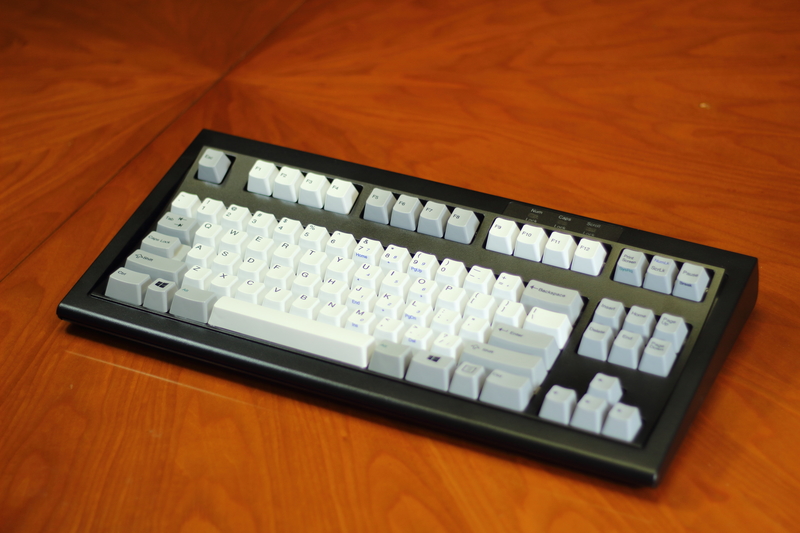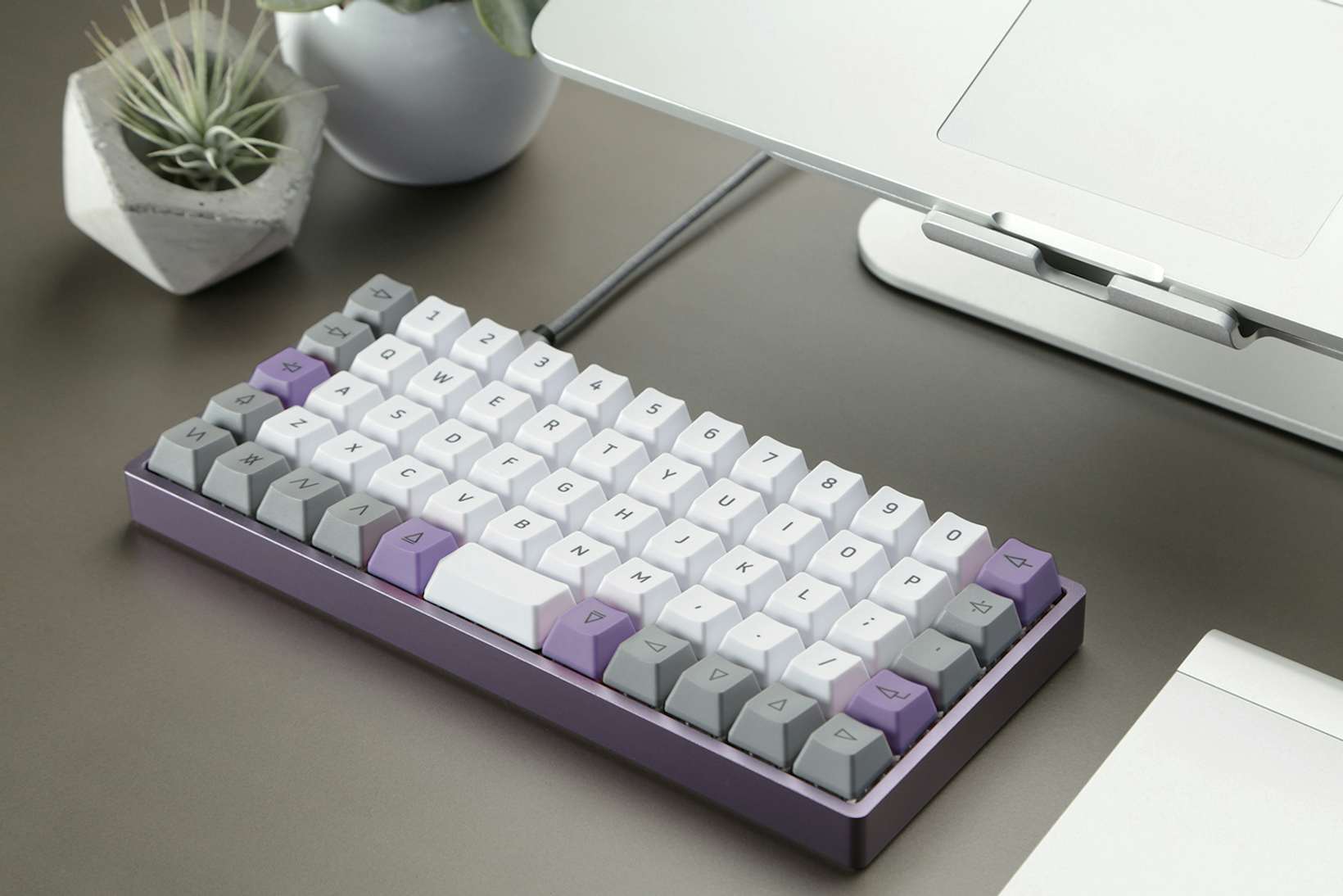I'm Jacob Keisling. I own fourteen keyboards (and counting!) and have sold or destroyed at least ten more. I have keyboards five decades old, keyboards with no number keys, keyboards that can type in math, and I've even helped build a wearable keyboard suit. I've seen the best boards the world has to offer, from Akihabara to Yongsan to Den Den Town to Wanchai Market. I've written and flashed my own firmware, soldered my own switches, laser cut my own keyboard cases, and even hand-wired boards. I am a keyboard person.
However, you don't have to be a keyboard person to have a great mechanical keyboard. In this guide, I'll use my hard-earned experience to help you find your perfect keyboard for up to a decade of worry-free typing. I'll walk you through the best keyboards you can buy at every price point from $50 to $200, and help guide you through the jargon to make a decision. Ready? Let's get started!
Background knowledge
I'll try to keep the jargon in this guide to a minimum, but to shop for a mechanical keyboard, there's some background knowledge you can't do without:
- The different types of switches: linear, tactile, and clicky. Whichever you like is completely down to preference.
- Keyboard layouts and form factors
- What function layers are. Whether you know it or not, you've probably already used a function layer, like the
fnkey on a laptop. On keyboards 60% or smaller, there are no physical F-keys and arrow keys, so you access them by pressing down the function key and some other one. - Hotswap: You can replace the switches yourself without desoldering. A very handy feature since if you dislike your switches or just want a change, you don't have to buy another board.
See this amazing shitpost for a switch guide. I didn't write it, but I sure wish I did
What kind of keyboard to get
For most people, the best layout is probably 65% or 75%:
- If you don't know you need a number pad, you probably don't need one. You can always buy a standalone one later, so don't get a full-size keyboard now. You will appreciate the desk space more than you think.
- If you can't already touch-type the F keys or don't use them all that much, you also probably don't need a dedicated F-row. (No, you don't need F-keys just to press F5 and F11).
- You will really want dedicated arrow keys, though. You don't need physical arrow keys for just moving around, but you probably will use arrows enough in keyboard shortcuts that you'll appreciate not having to press another key.
During non-professional gaming, the type of the switch doesn't matter all that much. I have been equally fine with linear, tactile, and clicky in all games. However, the weight is important. Heavy switches tire me out quickly and aren't all that responsive.
Now let's find the best options at each price point:
$50 and below
These days, you can definitely find a perfectly good mechanical keyboard under $50. Indeed, most budget boards are just as good or better than mass-market gaming boards by Logitech, Corsair, HyperX etc. that cost twice as much (well, there is one exception, which we'll get to in a bit). If you just want "a keyboard", you can pick one of these and be perfectly happy for at least a few years. However, to pick a good board, you'll need to avoid some significant gotchas:
- At this price point, there are no good tactile or clicky switches. Cherry Brown "tactile" switches and their clones feel like scratchy linears, and Cherry Blue "clicky" switches sound absolutely awful. Buy a board with linears, preferably from Gateron or Kailh. If you want to use tactile or clicky, then buy a board with hot swap switches and replace the switches later when you have the funds.
- Don't buy anything that requires custom software to run. In general no software for any mass-market keyboard is any good, and that applies double to the Chinese no-name boards at this price bracket.
- Don't buy anything smaller than 65%. Nearly all 60% boards at this price range have horrible default function layer layouts that can't be edited.
At this price point, I would buy the RK68 with Gateron Red switches.

For around $50, it's got a standard 65% layout, hot-swap, and decent enough stock switches. I would advise against buying keyboards larger than 65% unless you really know you need F-keys, but one with F-keys is this one also for $50.
$50-90
Honestly, for gamers, there's not that much difference between a $50 and a $90 keyboard. If I were in this price range, I would generally just buy a cheaper hotswap board and spend the extra money on replacement switches and a better mouse, or spend an extra $20-50 and get something much better. For mice, I would buy a Logitech G502 for just gaming, or for productivity, a mouse with multiple side buttons like the Logitech G604 or Corsair Scimitar. Read on for how to upgrade your board.
For office use, however, paying for a more professional-looking standard mech with better build quality does make sense. Keychron makes some great boards at this price point. I recommend the K6 with Gateron Reds for $85:

Do pay extra for hotswap, but not for aluminum or backlighting.
$100 - $200
Now we are reaching the good stuff. At this price point, you can pick a great board that will probably last you for decades.
Prebuilt
For pure gaming, I would recommend the Razer Huntsman Tournament Edition.
For just $130, it has some of the best linear switches ever made; they feel buttery smooth and will last effectively indefinitely. Even keyboard veterans who've tried hundreds of boards, including all-time vintage greats like Honeywell's legendary Hall Effect linears and Fujitsu's leaf springs, still think these switches are great. It also has solid PBT double-shot keycaps, RGB, and a tenkeyless layout.
If you want really solid clicky switches, the Unicomp Mini M is a great choice. For $120, you get the lovely buckling spring switches of IBM's classic Model M in a tenkeyless form factor. My own Model M is a joy to type on even thirty years after it was built; there's no reason you can't get similar mileage out of this.

Kits
If you're feeling really daring, try a tiny ortholinear keyboard, the Preonic:

It might seem tough to get used to a grid ("ortholinear") layout, to brackets and tildes on a function layer, and to a tiny space bar, but you'll soon grow to love the small form factor. This keyboard is fully programmable with the extremely powerful QMK firmware, so you can set any key to anything you want, put custom macros under any key, have a key do one thing when tapped and another when held, etc. Ask me if you want any layout tips.
The parts are sold separately: It's $105 for the base kit, another $30 for keycaps, and $20 or so for the switches (see below for recommendations). Trust me, it's fun and easy to put it all together. A great upgrade is MT3 keycaps; for $65, you get old-style keycaps like the old Honeywell and IBM terminals that cup your fingers. Here's a Preonic with black-and-white MT3 caps:

Upgrades
Switches
- Linear: Gateron Yellow is the best bang for the buck here. You get buttery smooth linears that are just the right amount of weight to press. They're very cheap at just $17 for 70 (enough for a 65%) or $20 for 90 from my favorite switch vendor Novelkeys. If they're sold out, try Kinetic Labs.
- Tactile: A very solid choice is the Durock T1 switch. For $0.55 a switch, you get a wonderful rounded typing feel that's really tactile. If you want silent switches, I use the Boba U4, which are ~65 cents / per from RingerKeys.
- Clicky: An interesting choice is Kailh BOX White, which has a really crisp clicking sound and feels smooth and just on the edge between tactile and linear, but in a good way. For a stronger tactile feel, try BOX Jade.
You'll also want a switch puller to remove the old switches easily from your keyboard.
Keycaps
Custom keycaps can get really expensive and are often out of stock. Here are some in-stock options at decent price points:
If you have an RGB board whose lighting you want to show off a bit more, Glorious has these caps for around $30:

KBDFans has a wide array of keycaps for budgets from $30-90 that are all decent value. Alll the acronyms and jargon can be overwhelming; this guide might be able to help. TL;DR: Buy MX mount keycaps (not Topre). Cherry profile (the best but priciest brand of this is GMK; others are also good) is what you're used to, DSA and KAT is flat, SA and NP is old terminal style. I personally like SA, but that's just me. Keep in mind these ship from China and might take a while.
If you're in the mood to slash out $100 on keycaps, I highly recommend Drop's MT3 style of keycaps. They're terminal style and hug your fingers. I use them every day and highly recommend.
Conclusions
These boards are only the surface of the keyboard rabbit hole. There are ergonomic keyboards, vintage keyboards, fully custom keyboards, etc. All of these have some great strengths, from excellent build quality to full programmability to better ergonomics to keyfeel you can't get on modern boards. Feel free to hit me up if you want me to walk you through them. But at the end of the day, you don't really need anything from further down the rabbit hole (except for full programmability - if you need macros that's a game changer). Any one of these keyboards will be a great choice that will make every word a pleasure to type for the next five to ten years.
Thanks for reading! If you have any questions, feel free to email me at jkeisling@uchicago.edu.